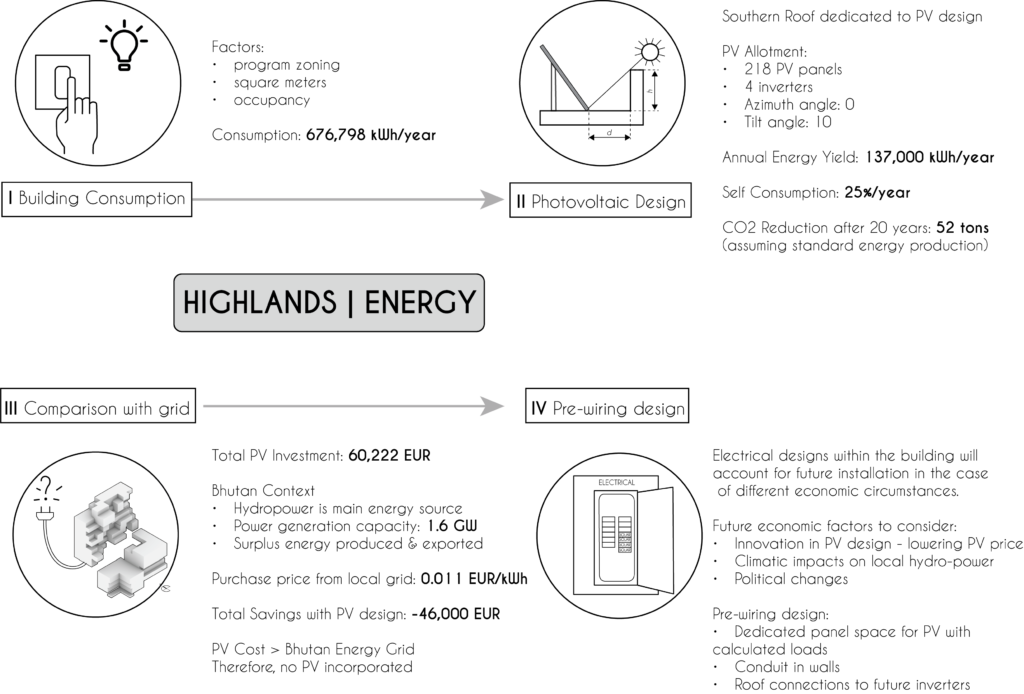Shruti Sahasrabudhe, Larsen Bidstrup, Nishanth Maheshwaran, Jacek Antoni Kostrzewa
MASTER IN ADVANCED ECOLOGICAL BUILDINGS AND BIOCITIES, 2022-2023, IAAC
To align with overarching sustainability values of the project, we approached the energy design module with intentions to reduce carbon footprint and improve self-sufficiency. Sunny Design software was used with climate date of Paro, Bhutan to help us produce and analyze energy calculations.
Energy Demand Analysis

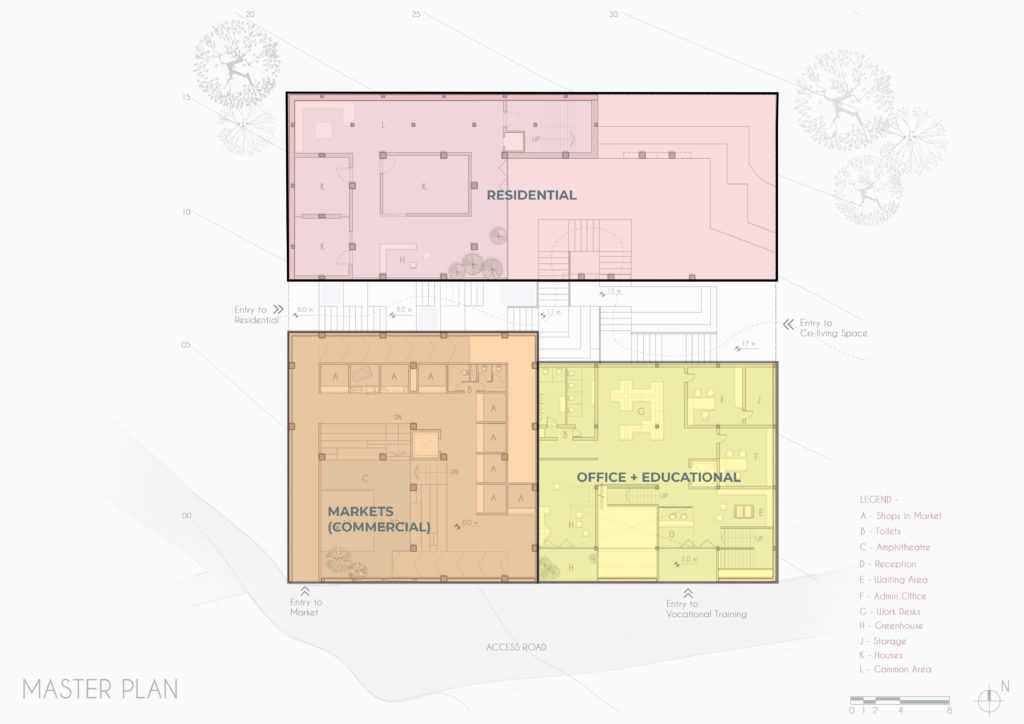
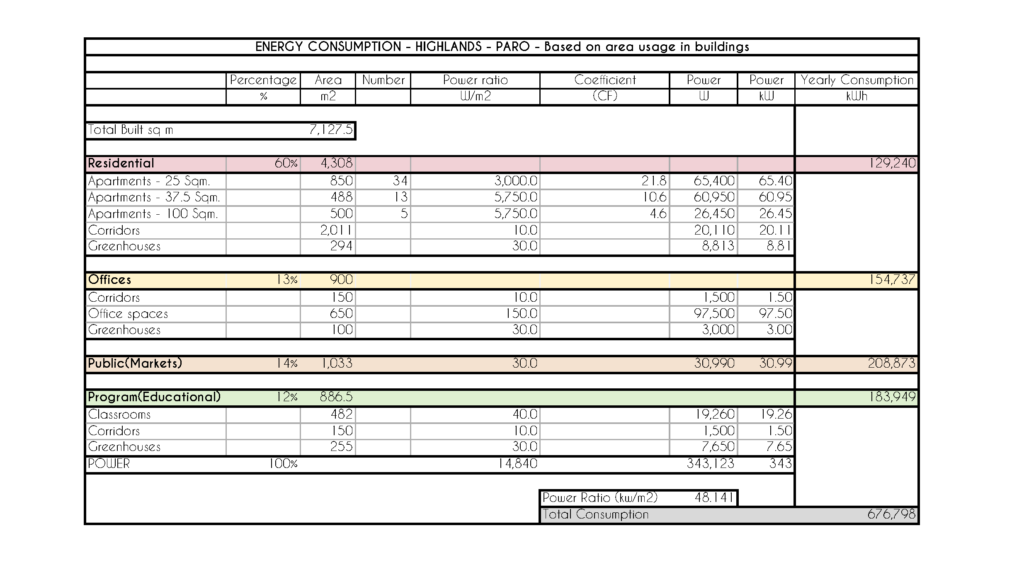
Based on the building footprint and anticipated occupancy, we calculated the energy demand baselines across the site. Total energy consumption is projected to be 676,798 kWh / year.
Horizon Research
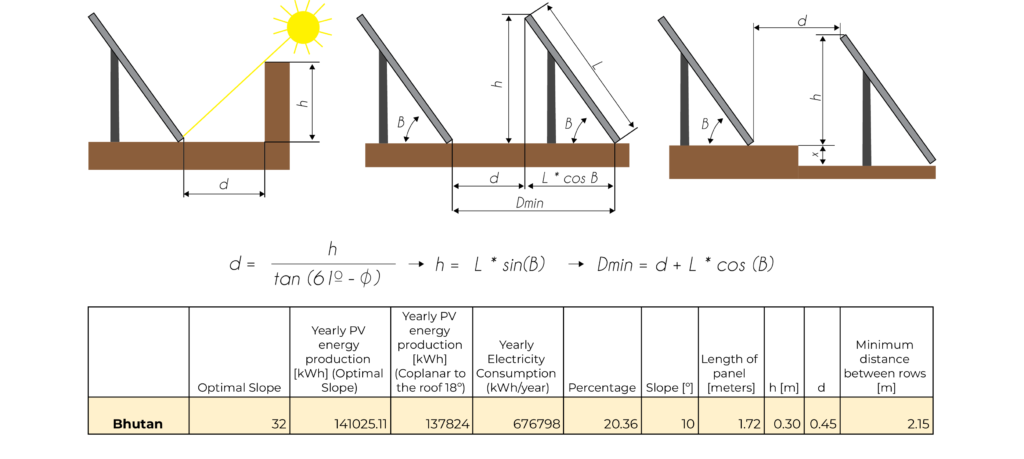
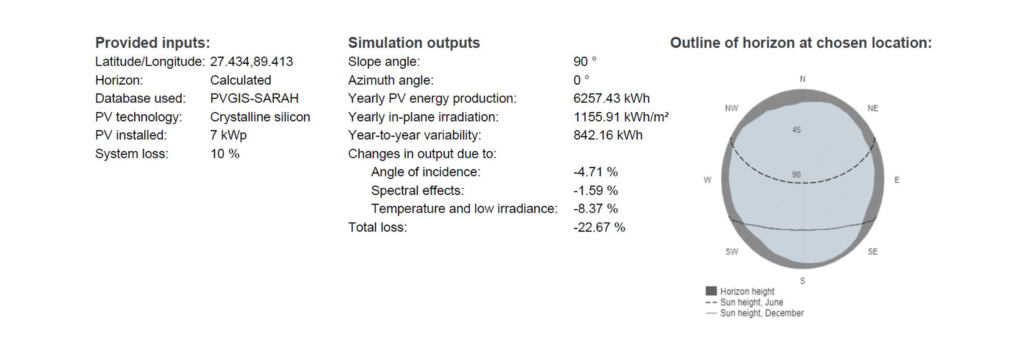
With specific context of Paro, Bhutan, sun paths could be analyzed in regards to PV panel radiation intake. Adjusting the angles of capture in turn cast shadows behind. This concept was considered when designing rows of panels perpendicular to the sun.
PV Panel Placement
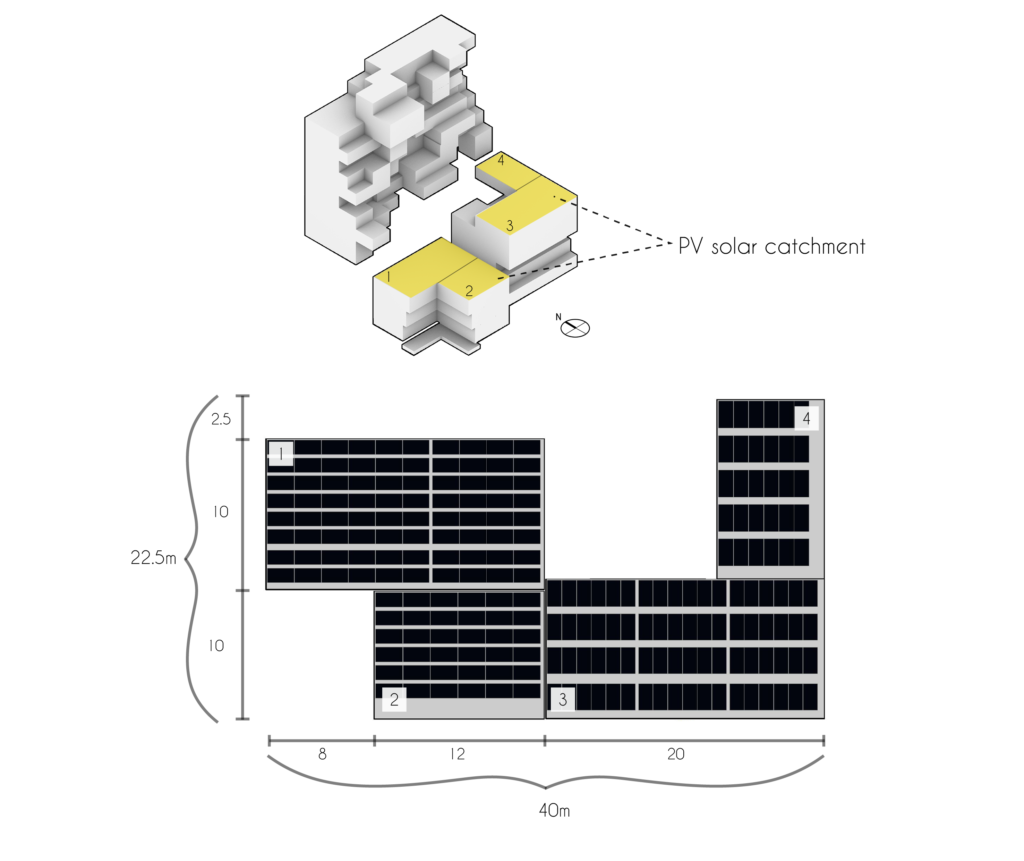
On the south side of the building site, rooftops of the public areas were ideal spaces to capitalize on solar radiation.
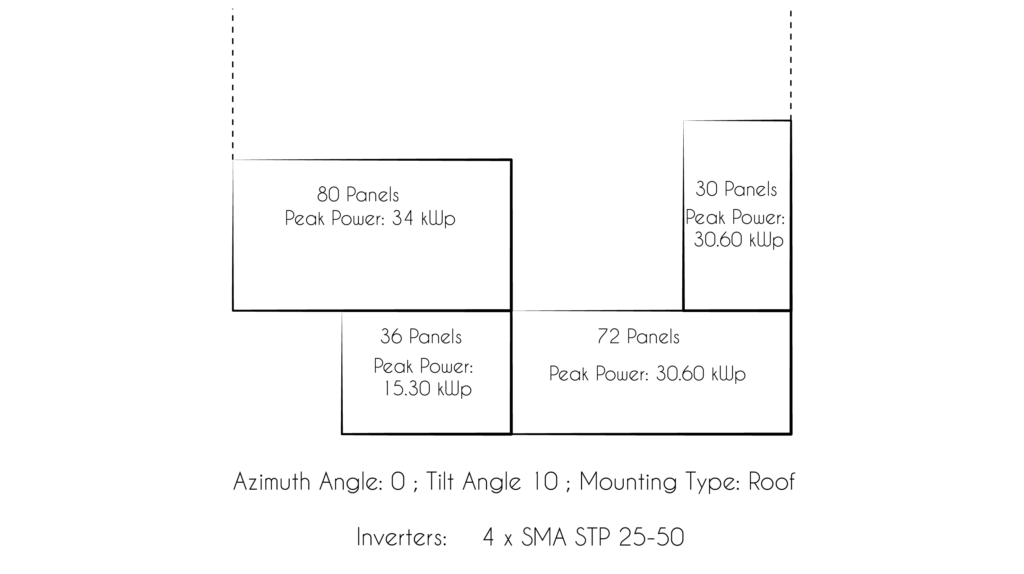

In maximizing PV panels on the public sector of the building footprint, a total of 218 PV modules and 4 inverters can be integrated with a flat roof design, producing 137 MWh annually.
Photovoltaic Energy Yield
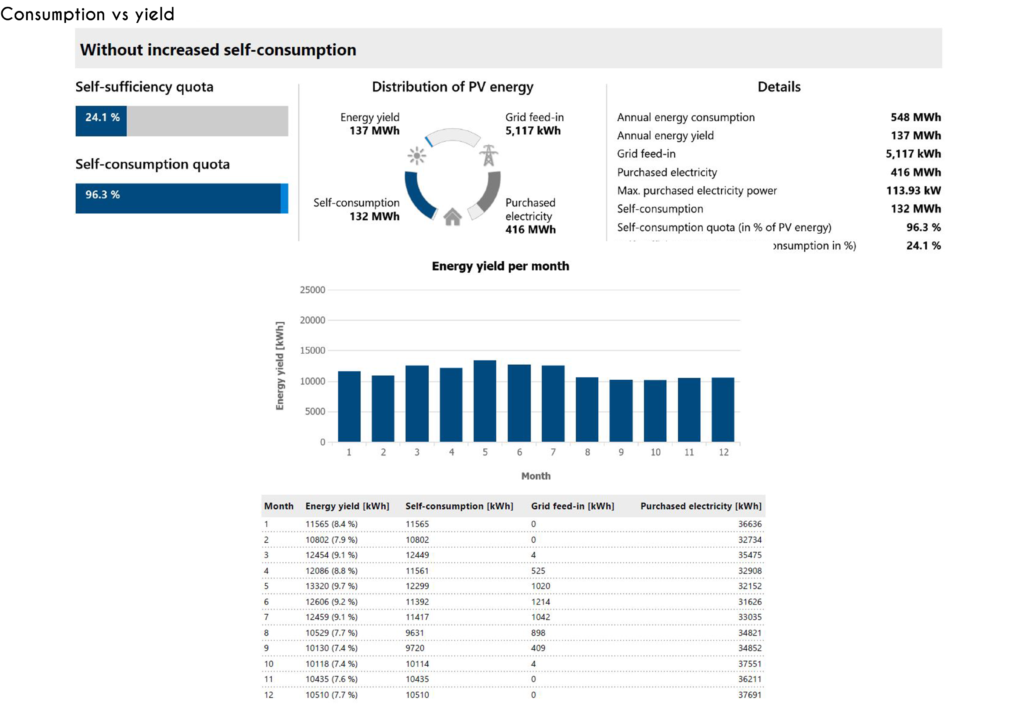
Across the year, monthly energy yield with PV system hovers between 10000 and 15000 kWh. To meet total demand, 416 mWh of electricity will be drawn from the local grid. With this electrical network implemented, reliance on the local grid is reduced by 25%.
Bhutan Energy Grid Research
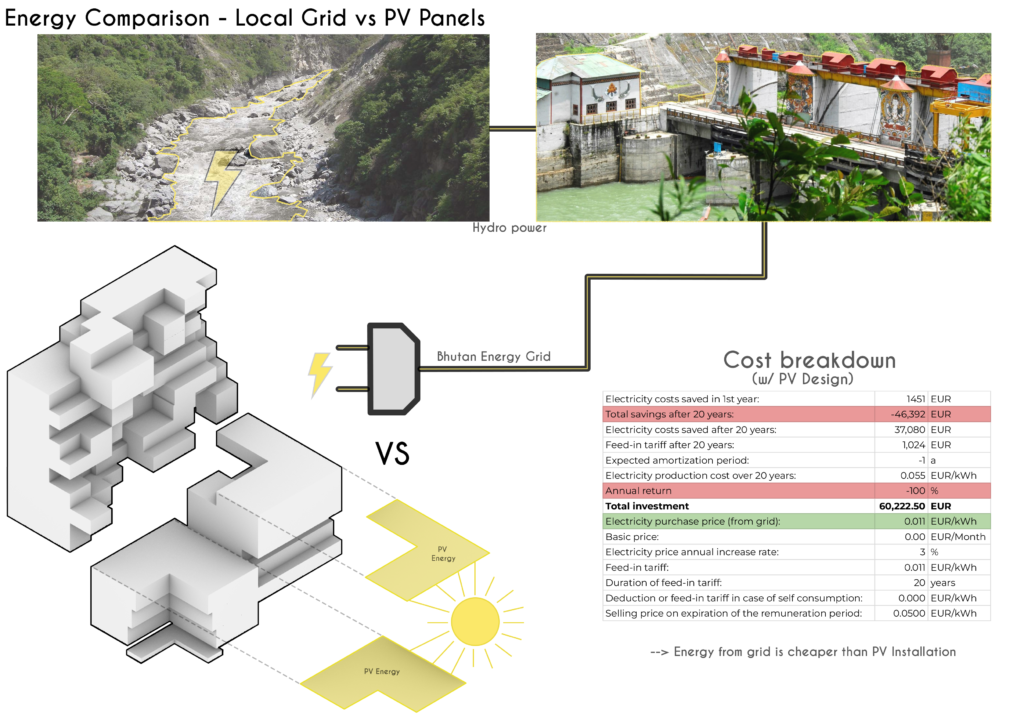

When cost analysis is overlaid within the context of Bhutan, results are financially in favor of using energy from the grid rather than from photovoltaic panels. Bhutan as a nation produces a surplus of electricity due to its immense hydro-power infrastructure, thereby making average price of electricity very low – at .011EUR/kWh – compared to other countries. With the cost of PV panel installment on the building amounting to over 60,000 euros, design decisions were to pull energy from the grid.
‘Future-proof’ electrical design
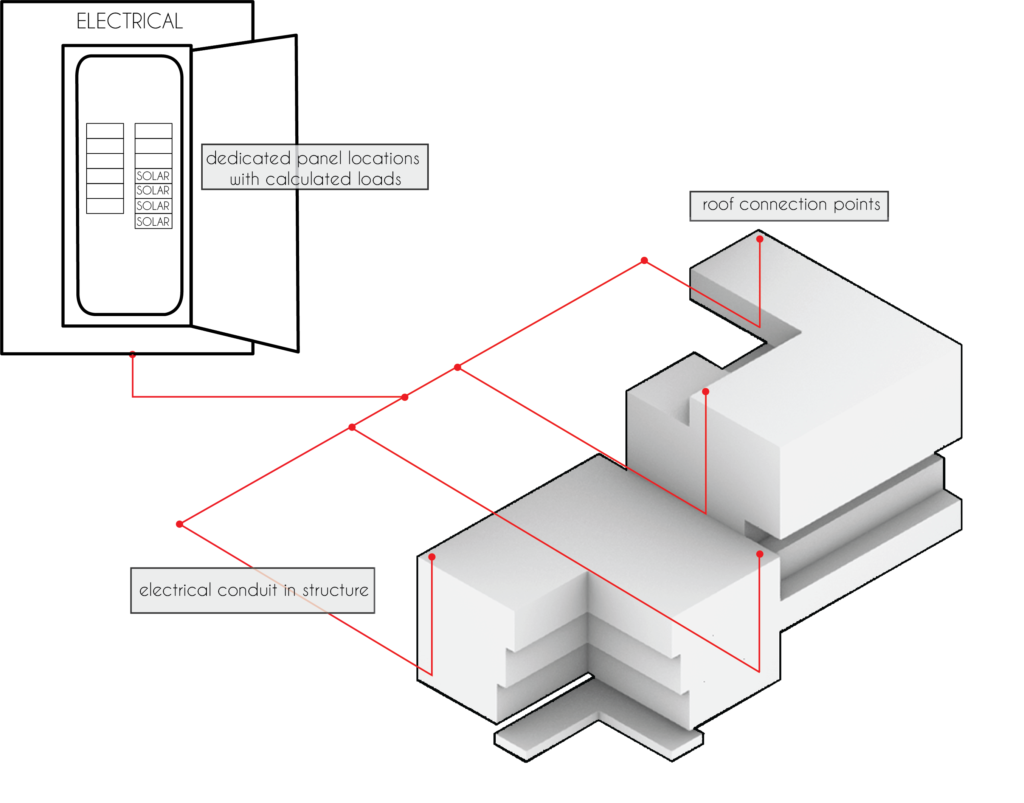
Although financially it doesn’t make sense to install PV panels in Bhutan’s context in the present situation, it’s important to be ready for the future. With the optimized PV design in mind on commercial building, electrical conduits will be installed and connected to electrical panels in the case of future installation. Breakthroughs in solar power technology will likely drive innovation in constructability, thus reducing the price and increasing accessibility to consumers. Other factors such as severe drought in local watersheds might affect the cheap hydro-power supplying the grid which may tip the scale towards financial feasibility of PV in Bhutan context. Whatever the factor, simple steps in the construction phase of the building will open up the option for on-site energy production in the future, improving the buildings’ self-sufficiency measure.
